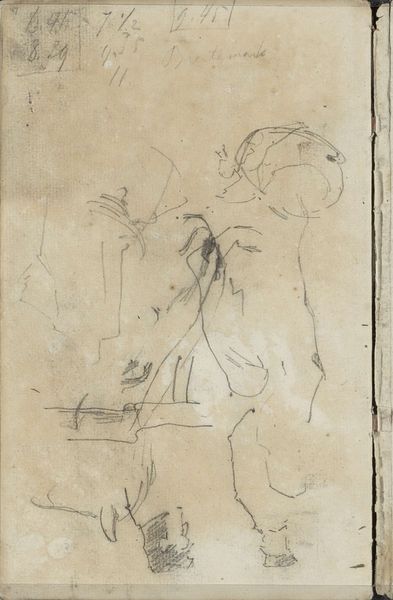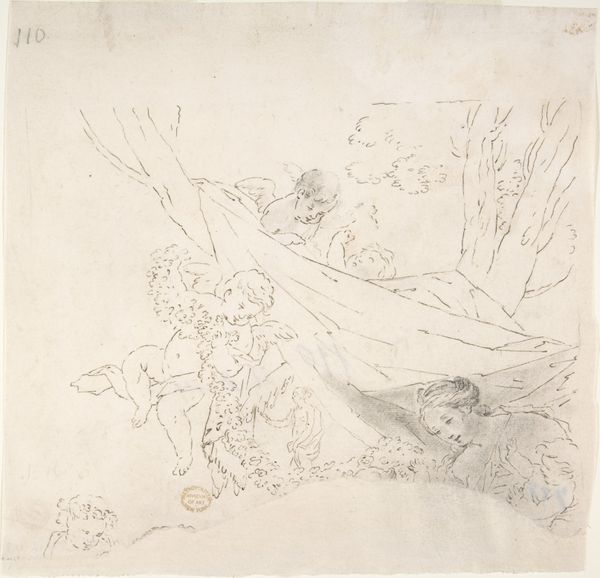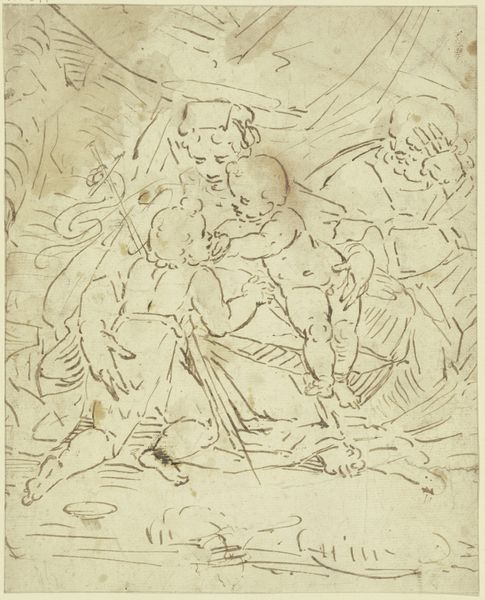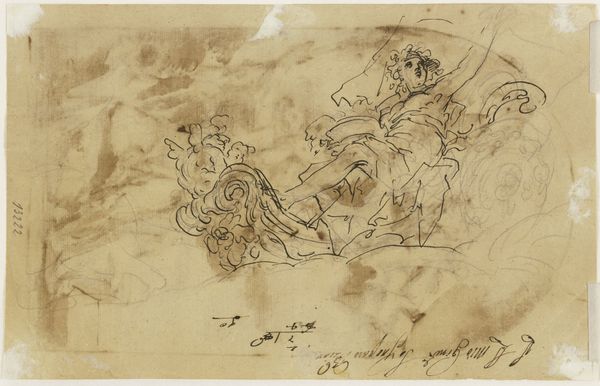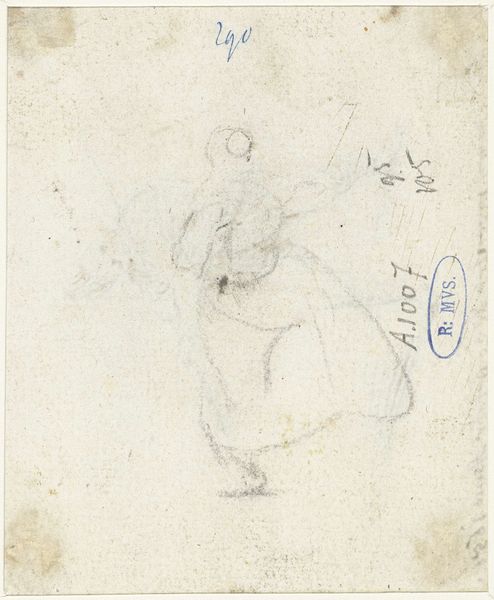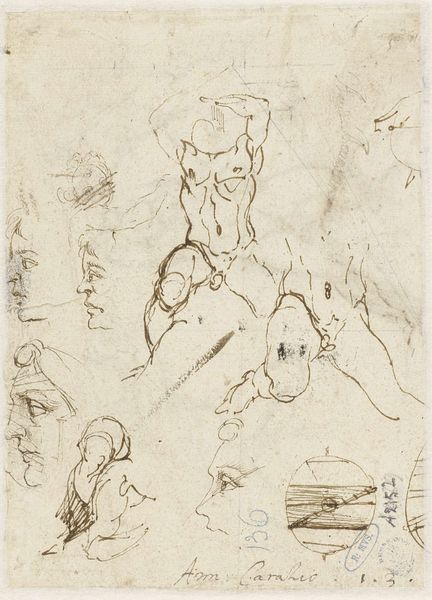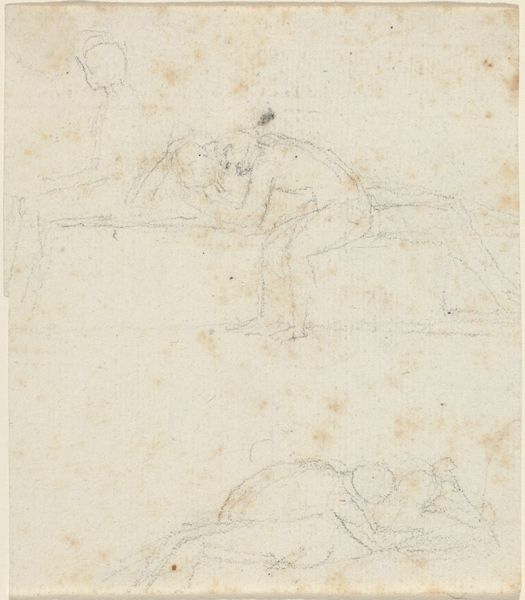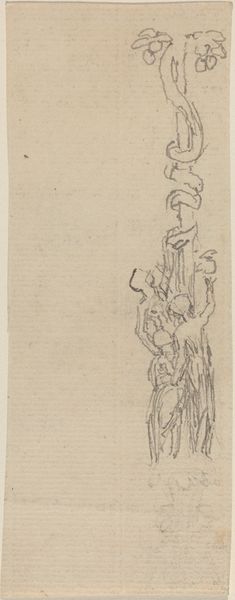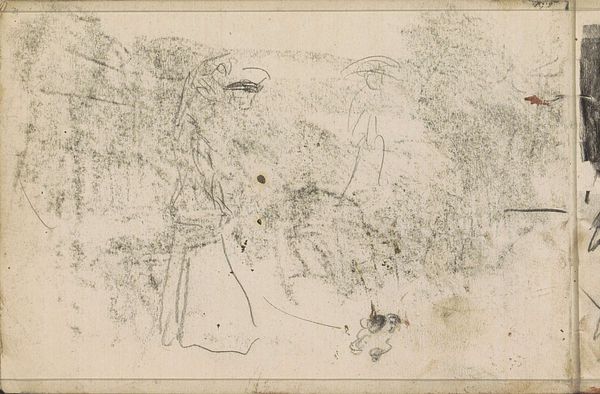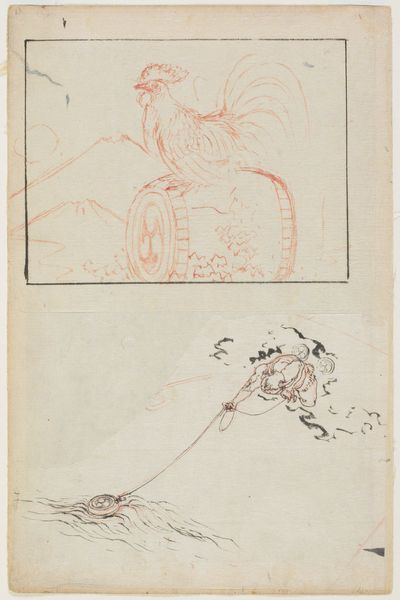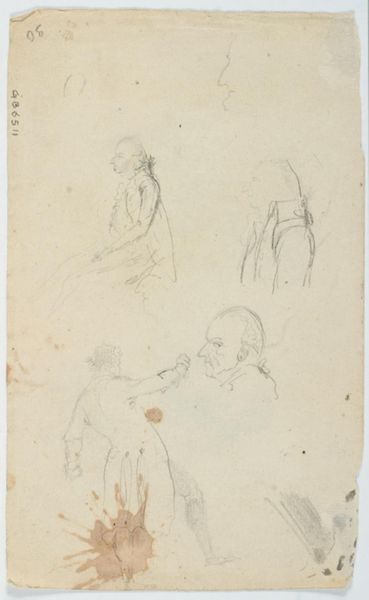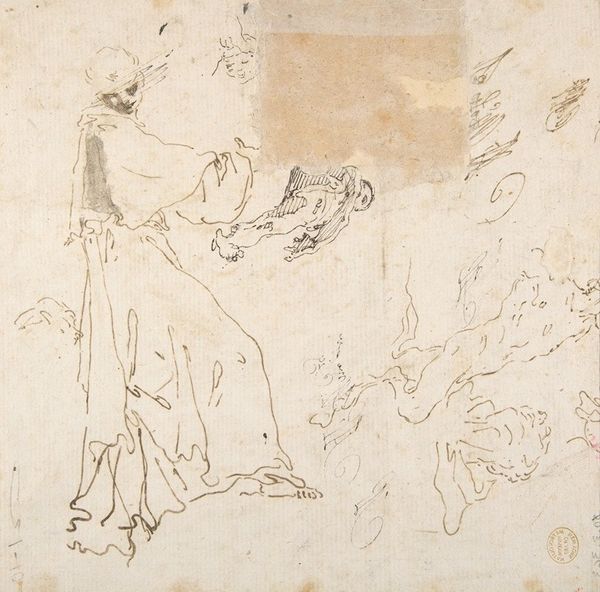
#
toned paper
#
light pencil work
#
pencil sketch
#
incomplete sketchy
#
ink drawing experimentation
#
underpainting
#
watercolour bleed
#
watercolour illustration
#
sketchbook art
#
watercolor
Dimensions: height 303 mm, width 243 mm
Copyright: Rijks Museum: Open Domain
Editor: Here we have Jacob de Wit's "Schets van kindertjes die met een geit spelen," a sketch done sometime between 1705 and 1754 using watercolors. It has such a light, almost dreamlike quality to it. How do you interpret this work? Curator: Well, let’s consider the societal context of the 18th century. Childhood itself was being redefined; this sketch, with its soft lines and innocent subject matter, reflects a growing awareness and idealization of youth. But who exactly is free to experience this youth? Does it extend to all children, or does the picture hide something? Editor: I see what you mean. There is definitely an element of idealized innocence, almost cherubic, that contrasts with the very real struggles of the time. Curator: Exactly! And the presence of the goat…goats were often symbolic of abundance but also of capriciousness. Is De Wit perhaps hinting at the unpredictable nature of childhood, the innocence that is inevitably lost? How does this dynamic manifest in relation to societal inequities and power structures? Editor: It's fascinating how a seemingly simple sketch can reveal such complex layers of meaning when viewed through a historical and social lens. Curator: Precisely. Art is never created in a vacuum; it's a dialogue with its time. Considering race, gender, class...these aren't just details but rather fundamental forces shaping both the artwork and our interpretation of it. What do you think that does to our modern reading of the work, with our increased focus on intersectional paradigms? Editor: It makes it even more imperative that we see it through a multi-layered lens, always mindful of whose stories are centered and whose are marginalized. It adds so much to unpack from this single artwork! Curator: And in that unravelling we might find connections to our own biases and assumptions today.
Comments
No comments
Be the first to comment and join the conversation on the ultimate creative platform.
